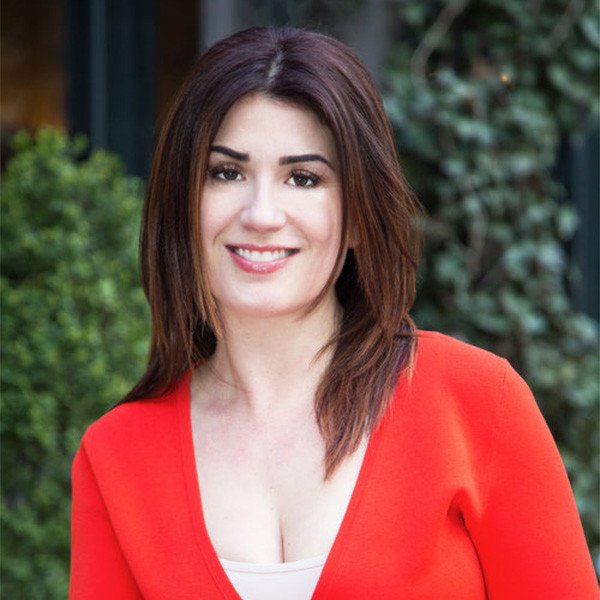APRIL 12TH IS EQUAL PAY DAY, AND IT’S ALL ABOUT CREATING A FAIRER WORLD FOR WOMEN LIKE US. THAT’S SOMETHING WORTH CELEBRATING, RIGHT?
But first, a brief history on Equal Pay Day. It originated in 1996 by the National Committee on Pay Equity (NCPE) as a public awareness event—with a clear focus on demonstrating the gap between men’s and women’s wages. While a variety of factors go into determining the exact date each year, a Tuesday in April was selected to show how far into the work week women must work to earn what men earned the previous week. For a complete history (and to find out how you can host or participate in the event), please visit ncpe.org.
Now that you’re primed on the basics, here are five moments over the last 150 years when women took a stand for getting paid the same as their male counterparts. The downside? We still have a lot of work to do to correct the imbalances. The good news? Women like these have been persistent in raising awareness of this issue, continually setting the stage for even more significant change.
1. A LETTER TO THE EDITOR
Women sounding off about equal pay dates all the way back to the Civil War Era, when one took it upon herself to write a letter to the editor of the New York Times. Her focus: calling out the fact that female government workers were paid less than male government counterparts. In her view, this was even more tragic given that women were taking on tremendous responsibility during wartime.
Looking back now, we’d expect her to have spent a lot of energy establishing the inequity of unequal pay. But, interestingly enough, she seems to indicate that the equal pay was accepted in theory but hadn’t yet been translated to reality:
“But it is one thing to acknowledge the right of a principle and quite another to practice it.”
Identifying this disconnect between how things should be and clear actions to fix systemic problems is totally progressive—and something we still are working on today.
2. EDUCATION MATTERS
After the turn of the century, courageous women continued to push for equal pay, one battle at a time. One of the notable victories was in 1906, when a woman named Grace Strachan spoke on behalf of New York female teachers, calling for “equal pay for equal work.”
Her famous words still resonate today:
“Why should a woman’s minimum annual salary be $300 less than a man’s, and why should her maximum salary be $960 less than a man’s? The women teachers do the same work, are exempt from no rules or duties, and most of them have fathers, mothers, sisters or brothers dependent upon them.”
The advocacy paid off. Five years later, in 1911, New York female teachers were granted equal pay by the state.
3. TAKING IT TO THE TOP
By now, you’ve noticed that the women who advocate for equal pay have to be in it for the long haul. Making strides towards progress takes energy, commitment, and most of all, time. Another great example of this investment is Lily Ledbetter, who underwent a 10-year legal battle against her former employer, Goodyear Tire and Rubber company, based on her knowledge that men in similar positions were making significantly more money.
While Lily’s case eventually went all the way to the Supreme Court, she lost (on the grounds that she didn’t raise the issue in a timely fashion). However, her tireless advocacy earned her a passionate dissent from Justice Ruth Ginsberg.
In addition, when President Obama took office, his first major piece of legislation was directly inspired by Ledbetter. The Lily Ledbetter Fair Pay Restoration Act allows women new opportunities to file an equal-pay lawsuit by resetting the statute of limitations with each new paycheck affected by that discriminatory action. In other words, they won’t lose on the grounds that Lily did.
"In this day and age, it's about equality. It's about equal rights. It's about equal pay. We're pushing for that." - Hope Solo, goalkeeper of the U.S. women's soccer team
4. A WITTY COMEBACK
While the equal pay debate has been going on for almost two centuries, certain industries have been slower to even raise the issue. One such example is Hollywood, where scrutiny has been placed in recent years—not just on the lack of quality female roles or significant underrepresentation of female producers and directors, but on the fact even when females manage to secure these roles, they are still underpaid compared to industry males.
To call attention to the issue for Equal Pay Day 2015, women across Hollywood came together for a memorable faux “PSA.” Using the hashtag #makeitfair, the tongue-in-cheek video demands that men (who “only direct 93% of films) get their full 100%.
5. BRINGING IT OFF THE FIELD, TOO
That brings us to April 2016, when equal pay for equal work is still an ideal but not always a practice. Good thing we've got the U.S. Women's soccer team.
Fact: last year the women's team generated $20 million dollars more revenue than the U.S. men's soccer team. And yet, earlier this month, five members filed suit against the U.S. Soccer Federation. Turns out that women soccer players, despite their widespread popularity and countless wins and championships get paid 25% less than their male counterparts.
Says goalkeeper, Hope Solo, one of the five women listed on the lawsuit:
"In this day and age, it's about equality. It's about equal rights. It's about equal pay. We're pushing for that. We believe now the time is right because we believe it's our responsibility for women's sports and specifically for women's soccer to do whatever it takes to push for equal pay and equal rights. And to be treated with respect."
One thing's for sure: despite the infuriating fact that an issue like this can still exist on one of our national sports teams, we all know it's time for change. Members of the U.S. men's soccer team have taken to Twitter to state publicly that their team is completely behind the push for equal pay. And Hillary Clinton got in on the action, tweeting: "Wouldn't want to face these women in the field or in the courtroom." Agreed.
* * *
Who inspires you in the equal pay movement? What are you doing personally to push for change?










